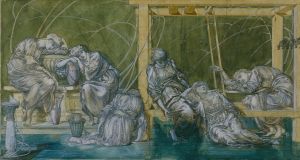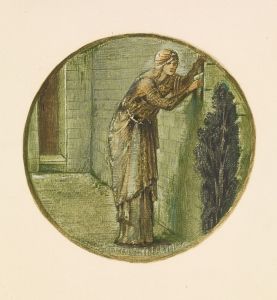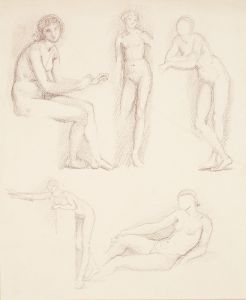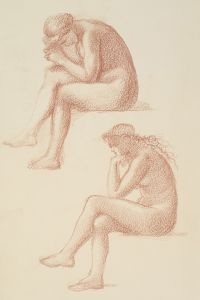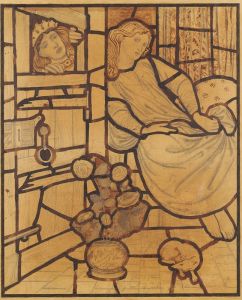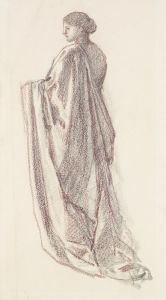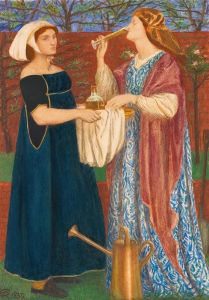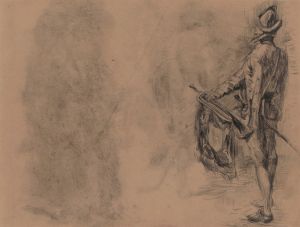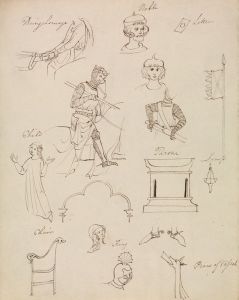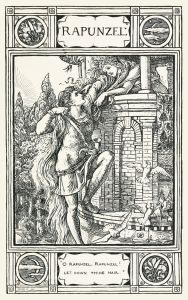
Study for ‘The Baleful Head’
A hand-painted replica of Sir Edward Coley Burne-Jones’s masterpiece Study for ‘The Baleful Head’, meticulously crafted by professional artists to capture the true essence of the original. Each piece is created with museum-quality canvas and rare mineral pigments, carefully painted by experienced artists with delicate brushstrokes and rich, layered colors to perfectly recreate the texture of the original artwork. Unlike machine-printed reproductions, this hand-painted version brings the painting to life, infused with the artist’s emotions and skill in every stroke. Whether for personal collection or home decoration, it instantly elevates the artistic atmosphere of any space.
"Study for ‘The Baleful Head’" is a preparatory work by the British artist Sir Edward Coley Burne-Jones, a prominent figure in the Pre-Raphaelite Brotherhood, an art movement that emerged in the mid-19th century. This study is related to one of Burne-Jones's major paintings, "The Baleful Head," which is part of the Perseus series. The series was commissioned by the renowned art collector Arthur Balfour in the late 1870s and early 1880s, and it depicts scenes from the Greek myth of Perseus.
Burne-Jones was known for his meticulous approach to painting, often creating numerous studies and sketches before completing a final piece. These preparatory works were crucial to his process, allowing him to explore composition, form, and detail. "Study for ‘The Baleful Head’" would have been part of this extensive preparatory phase, helping Burne-Jones to refine his ideas and techniques.
The Perseus series, including "The Baleful Head," illustrates the story of Perseus, a hero in Greek mythology who was tasked with slaying the Gorgon Medusa. Medusa was a fearsome creature with snakes for hair, and anyone who looked directly at her would be turned to stone. Perseus, with the help of the gods, managed to behead Medusa. In "The Baleful Head," Burne-Jones captures the moment when Perseus shows the severed head of Medusa to Andromeda, his beloved, reflecting the theme of transformation and the power of the gaze.
Burne-Jones's work is characterized by its romanticism, intricate detail, and use of mythological and literary themes. His style was heavily influenced by medieval art and the Italian Renaissance, which is evident in the rich, decorative quality of his paintings. The Pre-Raphaelite Brotherhood, of which Burne-Jones was a part, sought to return to the detail, intense colors, and complex compositions of pre-Renaissance art, rejecting the academic standards of their time.
"Study for ‘The Baleful Head’" would have been executed with great attention to detail, focusing on the figures' expressions and the dramatic tension of the scene. Burne-Jones's studies often reveal his interest in the human form and his ability to convey emotion through subtle gestures and facial expressions.
The final painting, "The Baleful Head," is housed in the Staatsgalerie Stuttgart in Germany, where it continues to be admired for its beauty and the depth of its storytelling. Burne-Jones's work, including his studies, remains influential, celebrated for its contribution to the revival of interest in medieval and mythological themes in art.
Overall, "Study for ‘The Baleful Head’" exemplifies Burne-Jones's artistic process and his dedication to creating works that are both visually stunning and rich in narrative content.





